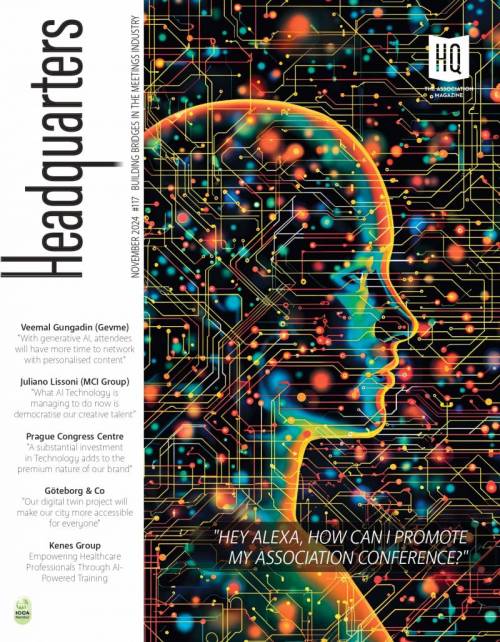Challenges and Opportunities for 21st Century Associations

Like all other organisations, associations today exist in environments characterised by a state of constant change and fluidity. If you are part of an association management team, you may wonder which nowadays are the most pressing issues and how to rise to these challenging surroundings. Here is an overview of five major challenges and opportunities affecting the association industry today.
1. Changing Membership Models
 The Challenge: Members' Needs and Expectations are Changing
The Challenge: Members' Needs and Expectations are Changing
Over the past few decades, and mostly due to social and technological changes, we have come to see information in a different light. Thanks to the Internet, information is now widely available in multiple formats, and the general public expects to access to it for free anytime and anywhere. At the same time, the concept of membership and belonging has taken a strong social and relational direction. Such expectations require associations to examine how they are playing out their educational role, as well as the nature of their membership models.
The Opportunity: Create Membership Models that offer Experiential Value
Changing membership models mean that associations must do more than just deliver valuable information. Instead, the focus should be on designing subscription models that create experiential value in every interaction, whether it is in person, online, at events, etc. Modern associations should strive to generate experience-based membership models that appeal to relational, cognitive, and sensory qualities and that are easily actionable in everyday life.
2. The Transformative Impact of Technology
The Challenge: Harnessing the Power of New Technologies and avoiding Security Threats
The digital transformation had a profound effect on the membership and association sector. In some cases, it facilitated the process of attracting and retaining supporters, but in others, it rendered working models obsolete. Many associations today fail to make the most of the data, tools, and resources that come with technological advances and are still offering generic or outdated digital experiences. With the increased use of technology come security threats, which in some cases are being overlooked despite the fact that cybercriminals often target associations due to the sensitive nature of the data they gather.
The Opportunity: Embracing New Technologies Safely
Twenty-first-century associations should not discount the potential that new technologies have to attract new members (especially young generations), as well as to vastly improve the online experience of all members irrespective of their age. Investing in a strong social media presence, gathering and analysing Big Data, adopting mobile-friendly website design, integrating cyber-security into the organisation's culture, and developing event and membership apps are all tremendous opportunities for modern associations. These, together with a multi-channel communication strategy and a focus on delivering personalised experiences can make associations more attractive to a wider section of the population.
3. Demographic Shifts
The Challenge: Keeping a changing Demographic Base Engaged
The degree of alignment between an association's identity and mission and the expectations of growing and influential population segments is another challenge. Many organisations struggle to attract millennials and keeping them engaged. Moreover, changing demographics, social mobility trends, and population booms in emerging economies can have a significant impact on human networks, both within associations and between associations and their prospective membership base.
The Opportunity: Developing a Multi-Generational Engagement Strategy
To boost engagement across all demographic groups, associations must develop strategies that address the needs of several age and socio-economic profiles. The key here consists in diversifying the range of collaboration opportunities available while moving towards more flexible and short-term activities, membership models, and volunteer participation schemes. These should be marked by a focus on learning and development, independent decision-making, and satisfying a quest for meaning and achievement both at personal, professional, and social level.
4. An Uncertain Financial Environment
The Challenge: Building and maintaining Sustainable Associations
Financial uncertainty affects the dynamics between associations and their supporters and jeopardises the feasibility of current and future projects. Frequent budget cuts and a greater demand for accountability and transparency mean that associations facing pressure to remain profitable should evaluate their fundraising and operational strategies.
The Opportunity: Pursue a Culture of Leadership
Long-term sustainability can be improved by nurturing leadership at all levels, and not only in the boardroom. A culture of leadership is evidenced in decision-making; the communicative preferences and style between directors, staff members, volunteers, sponsors, and the general public; and the provision of skill development opportunities so that staff and volunteers can fine tune their leadership abilities.
5. Managerial and Human Resources Issues
The Challenge: Management Models are becoming Outdated
Finding an effective way of managing people and resources has always been a thorny issue for organisations, but it has become even more poignant in recent years. This is partly due to the adoption of certain private sector practices, such as outsourcing or the “businification”of the membership and association industry. Some directors and board members may be reluctant to implement private sector management models, while in other cases there might be friction caused by conflicting views on this topic.
The Opportunity: Put Talent and Change Management in the Spotlight
To avoid internal conflict and capitalise on the organisation's human and financial resources, associations should focus on developing policies and strategies that prioritise the principles of talent and change management. When change is seen as an ongoing process that requires constant communication, transparency, and support structures, this can help create positive involvement and synergy between directors and all other stakeholders. Also, and to address gaps in knowledge of resources, associations today can benefit from the expert support of Professional Conference Organisers, who can provide strategic assistance with the many aspects involved in running an association.
Conclusion
The changing human, financial, and technological landscape in which associations operate presents them with unprecedented opportunities to evolve into forward-thinking organisations. Focusing on the creation of experiential value, embracing new technologies safely, developing a multi-generational engagement strategy, nurturing a culture of leadership, and cultivating talent and change management practices will help organisations remain competitive and profitable year after year and rise to each association challenge.
This article was provided by the International Association of Professional Congress Organisers, author Frank M. Waechter on behalf of IAPCO Council member Alain Pittet, Congrex Switzerland. Congrex Switzerland is a leading global provider of customised solutions in the field of meeting management and strategic consultancy for associations, corporations and governmental institutions. IAPCO represents today 115 professional organisers, meeting planners and managers of international and national congresses, conventions and special events from 41 countries.
Other Articles
About Us
Supported by the Union of International Associations (UIA), the International Association of Professional Congress Organisers (IAPCO) and the Interel Group, the global public affairs and association management consultancy, Headquarters Magazines serve the needs of international associations organising worldwide congresses.















